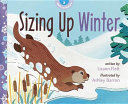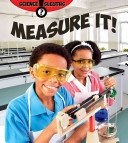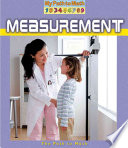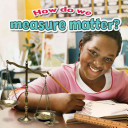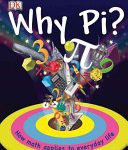Listed below are selected teacher resources, picture books, and non-fiction related to measurement.
Teacher Resources
 Putting essential understanding of geometry and measurement into practice in grades 3-5
Putting essential understanding of geometry and measurement into practice in grades 3-5
by Kathryn B. Chval et al.
Grades: 3-5
This book focuses on the specialized pedagogical content knowledge that teachers need to teach geometry and measurement effectively in grades 3-5. The authors demonstrate how to use this multifaceted knowledge to address the big ideas and essential understandings that students must develop for success with geometry and measurement–not only in their current work, but also in higher-level mathematics and a myriad of real-world contexts.
 Jumpstart! Maths: Maths activities and games for ages 5-14
Jumpstart! Maths: Maths activities and games for ages 5-14
by John Taylor
Grades: K-8
The author presents a collection of simple-to-use, multi-sensory games and activities which will jumpstart students’ understanding of mathematics in action. It will help students to explore and learn math both through technology and without, in an atmosphere of fun, mutual support and tolerance. Topics include number and place value, fractions, ratios, algebra, measurement, geometry, and more. (E-book only)
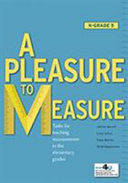 A pleasure to measure: Tasks for teaching measurement in the elementary grades
A pleasure to measure: Tasks for teaching measurement in the elementary grades
by Jeffrey Barrett et al.
Grades: K-5
With individual chapters for kindergarten through grade 5, this book includes 65 classroom-ready activities on measurement, along with a summary of learning goals, connections to children’s literature, and ideas for extending beyond the activities. In each chapter, the authors provide a collection of activities, a summary of level-specific measurement goals and learning trajectory stages, and a table that matches activities with learning stages.
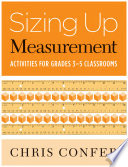 Sizing up measurement: activities for grades 3-5 classrooms
Sizing up measurement: activities for grades 3-5 classrooms
by Chris Confer
Grades: 3-5
This book shares lessons that focus on essential measurement concepts in relation to problem-solving concepts. The lessons help students know what it means to measure, identify what they’re measuring and what units to use, estimate results, choose suitable tools, and keep track of their results in an organized way.
 Mathematical art-o-facts: Activities to introduce, reinforce, or assess geometry & measurement skills
Mathematical art-o-facts: Activities to introduce, reinforce, or assess geometry & measurement skills
by Catherine Jones Kuhns
Grades: 3-6
Are these art projects or are they math activities? The answer is yes! Teachers can use these lessons to introduce, reinforce, or assess specific measurement and geometry skills. None requires lots of special materials, and all can be used to supplement your existing curriculum. These clever ideas promote mathematical thinking and creativity through problem-solving. Includes full-color photos and reproducibles.
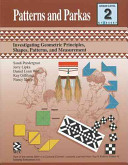 Patterns and parkas: Investigating geometric principles, shapes, patterns, and measurement
Patterns and parkas: Investigating geometric principles, shapes, patterns, and measurement
by Sandi Pendergrast et al.
Grades: 2
Grade two students learn about the properties of shapes including squares, rectangles, triangles, and parallelograms. They learn a variety of ways to make those shapes and how Yup’ik elders use these shapes to create patterns. As the students make shapes, they learn about geometrical relationships, symmetry, congruence, proofs and measuring. Part of the Math in a cultural context series.
Picture Books
written by Lizann Flatt, illustrated by Ashley Barron
What if animals and plants knew math, just like us? Would snowflakes all fall from the same height in the sky? Would otters spread themselves evenly across lakes? Would groundhogs be aware of the date? In this wintry picture book, nature comes to life to help children grasp concepts of time and measurement.
 If you were a pound or a kilogram
If you were a pound or a kilogram
written by Marcie Aboff, illustrated by Francesca Carabelli
If you were a pound or a kilogram, you would be the mass of things. You could be a sack of sugar, a basket of berries, or a heavy-duty truck. What else could you be if you were a pound or a kilogram? Part of the Math fun series.
written by David M. Schwartz, illustrated by Steven Kellogg
Marvelosissimo the Magician is ready to explore length, weight, and volume measurements. How tall is Moonbeam, the unicorn? How long are Jello the cat’s whiskers? Tons and ounces and feet and miles … with millions of things to measure, wouldn’t one standard system be simpler? With another wave of the wand, Marvelosissimo introduces the world of metrics and makes it easy to understand the basic pattern of meters, liters, and grams.
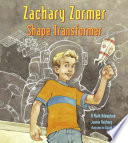 Zachary Zormer, shape transformer: A math adventure
Zachary Zormer, shape transformer: A math adventure
written by Joanne Reisberg, illustrated by David Hohn
Friday is Zachary Zormer’s favorite day of the week. At least it is until he realizes he forgot this week’s assignment: “Bring in something fun to measure.” What can Zack do when all he has to work with is a piece of paper he finds in his pocket? Week after week Zack takes on a different math concept with surprising projects including a mobius strip, a paper frame large enough to step through, and a light show that demonstrates how the sun heats the earth.
 Magnus Maximus, a marvelous measurer
Magnus Maximus, a marvelous measurer
written by Kathleen T. Pelley, illustrated by S. D. Schindler
Magnus Maximus is a marvelous measurer. He measures wetness and dryness, nearness and farness, and everything in between. When a lion escapes from a traveling circus, Magnus and his trusty measuring tape come to the rescue. Now a hero, all is well until the day Magnus accidentally breaks his glasses, and he sees—for the first time—that he’s been missing out on life’s simple pleasures.
written by Pam Pollack and Meg Belviso, illustrated by Lynn Adams
Grandpa has a surprise for Tim, Anne, and Gordon – chickens! Now, where should they put the chickens and their new home? Each time they move the fence, the coop becomes a different shape, but the perimeter stays the same. Can they figure it out? Part of the Math matters series.
Non-Fiction
by Crystal Sikkens
Grades: K-3
This book explains how scientists around the world use the metric system and related tools to help them compare, contrast, and analyze the measurement data they collect. The author gives opportunities for hands-on learning to help students refine their measuring skills. Part of the Science sleuths series.
by Penny Dowdy
Grades: K-3
This book offers young reader a clear insight into understanding length, weight, capacity, and temperature. It gives a easy-to-understand approach to measuring with non-standard, customary, and metric systems. Part of the My path to math series.
by Lynn Peppas
Grades: K-3
Young readers learn to identify different tools used to measure matter, such as balances, rulers, and thermometers. Also helps readers gain hands-on experience measuring, collecting and recording data, and graphing their results.
by Johnny Ball
Grades: 3-5
Focusing on how people from ancient Egyptians to modern scientists have used numbers to measure things through the ages, this book makes math interesting and is filled with games, puzzles, brainteasers, and fun facts.
Finding More Resources
To find more resources in this area, try the following:
- Search using the General tab on the UBC Library website to look for material in all UBC Library branches.
- Search using “Search Education Resources” box in the left hand bar on the Education Library website to limit your results to materials in the Education Library.
- Use specific search terms to narrow your results, such as “measurement”, “measurement – juvenile literature”, or “mathematics – study and teaching”.
- To find lesson plans, include “lesson plans”, “lesson planning”, or “activity programs” in your search terms.
For more help with searching, please visit the Library Service Desk or e-mail ed.lib@ubc.ca.
